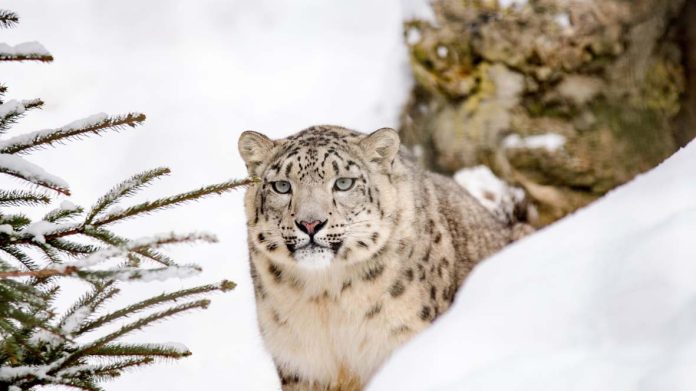Dr Rakesh Verma
The history of wildlife protection in Jammu & Kashmir is marked by significant milestones that reflect the evolving relationship between humans and nature. It began in 1901 with the establishment of the Game Preservation Department, primarily aimed at managing wildlife for royal hunting and recreational purposes. This initial focus on sport led to unregulated hunting practices, resulting in the decline of various species and the exploitation of the region’s rich biodiversity.
As the 20th century unfolded, the consequences of these practices became increasingly apparent. By 1979, there was a growing recognition of the need for a more structured approach to wildlife conservation, culminating in the formation of the Directorate of Wildlife Protection. This institution was a pivotal development that shifted the focus from mere preservation for sport to a broader understanding of wildlife’s intrinsic value. The formation of this directorate marked a critical transition towards recognizing the ecological importance of wildlife and its habitats, laying the groundwork for comprehensive conservation strategies.
The establishment of the Department of Wildlife Protection in 1982 further cemented the commitment to conservation in Jammu & Kashmir. This agency was tasked with the management and protection of wildlife and natural habitats across the region. The focus shifted from exploitation to a more holistic conservation approach, emphasizing biodiversity preservation and ecological balance. This transition was not without challenges, as the pressure of organized trade on wildlife populations became increasingly evident. Hunting evolved from a recreational activity into a commercial endeavor, driven by domestic and international demand for various wildlife products.
 In response to these challenges, the newly formed department prioritized the creation of stringent regulations to combat illegal wildlife trade. Public awareness campaigns were initiated to educate communities about the importance of wildlife conservation, fostering a collective responsibility toward protecting the region’s unique fauna. This ongoing struggle against illegal practices highlights the deepening understanding of the interdependence between human activities and wildlife health, emphasizing the need for sustainable practices that benefit both nature and local communities.
In response to these challenges, the newly formed department prioritized the creation of stringent regulations to combat illegal wildlife trade. Public awareness campaigns were initiated to educate communities about the importance of wildlife conservation, fostering a collective responsibility toward protecting the region’s unique fauna. This ongoing struggle against illegal practices highlights the deepening understanding of the interdependence between human activities and wildlife health, emphasizing the need for sustainable practices that benefit both nature and local communities.
Biodiversity Overview
Jammu & Kashmir’s unique geographical features contribute significantly to its rich biodiversity. Nestled in the northernmost part of India, this region is characterized by its towering Himalayan mountains, deep valleys, and expansive meadows. These diverse landscapes create a variety of ecosystems, each fostering different forms of life. The altitudinal gradient ranges from lush temperate forests to arid alpine zones, supporting an impressive variety of flora and fauna that thrive in these distinct habitats.
Among the notable species that inhabit the region is the majestic Golden Eagle, a top predator that plays a crucial role in controlling the population of smaller animals. These raptors are not only vital for maintaining ecological balance but also serve as indicators of environmental health. The Kalij Pheasant, recognized as the Union Territory’s bird, inhabits the forested areas and symbolizes the rich avian diversity of Jammu & Kashmir. Its vibrant plumage and unique behaviors contribute to the region’s ecological tapestry.
Another iconic species is the elusive Snow Leopard, which roams the rugged mountain terrains. As a keystone predator, it helps regulate prey populations, ensuring the health of the entire ecosystem. Similarly, the Hangul, a critically endangered deer species, is indigenous to the region’s forests and serves as a cultural emblem for the local communities. Protecting these species and their habitats is essential not only for biodiversity but also for preserving the cultural heritage of the region.
The habitats of these species-ranging from dense forests to alpine meadows-are crucial for their survival. They provide essential resources such as food, shelter, and breeding grounds. The ecological importance of these habitats extends to the communities that rely on the surrounding environment for their livelihoods, underscoring the need for effective conservation strategies to protect both wildlife and human interests in Jammu & Kashmir.
Habitat Diversity and Ecosystem Services
Jammu & Kashmir encompasses a remarkable variety of habitats, each contributing significantly to the region’s ecological integrity and the well-being of its local communities. The primary habitats include dense temperate forests, expansive alpine meadows, and rugged mountain terrains. These environments not only support a diverse range of wildlife but also provide critical ecosystem services that sustain the livelihoods and cultural identities of the people who inhabit these landscapes.
Forests in Jammu & Kashmir are characterized by majestic stands of Deodar and Blue Pine, providing essential habitats for numerous species, including the Snow Leopard and Kalij Pheasant. These forests act as carbon sinks, helping to mitigate climate change, and play a vital role in water regulation. They filter rainwater, replenish aquifers, and maintain the hydrological cycle, which is crucial for agricultural practices in the region. Moreover, forest resources provide local communities with timber, medicinal plants, and non-timber forest products, forming the backbone of their economic activities.
Alpine meadows, often adorned with vibrant wildflowers in spring, are another significant habitat within the region. These meadows serve as critical grazing grounds for herbivores such as the Hangul and various species of sheep and goats. The biodiversity within these meadows sustains not only the wildlife but also the pastoral communities, who depend on these resources for their livelihoods. The seasonal migration of livestock to these meadows exemplifies the symbiosis between humans and nature, reinforcing cultural traditions and practices passed down through generations.
The diverse habitats of Jammu & Kashmir also contribute to cultural identity, as local communities often have deep-rooted spiritual connections with the land and its wildlife. Traditional practices, folklore, and cultural events frequently revolve around the region’s natural resources, highlighting the intrinsic value of biodiversity. Protecting these habitats is paramount, not only for the survival of wildlife but also for preserving the cultural heritage and livelihoods of the communities that coexist with the rich tapestry of life in Jammu & Kashmir.
Impact of Human Activities on Wildlife
Human activities, such as urbanization, agriculture, and tourism, have significantly affected wildlife populations and habitats in Jammu & Kashmir. As the region experiences rapid urban growth, natural habitats are increasingly fragmented, leading to a loss of biodiversity and disruption of wildlife corridors. Urban expansion encroaches on critical ecosystems, forcing wildlife to adapt to new challenges or face displacement. This alteration of habitat can lead to increased human-wildlife conflicts, as animals seek food and shelter in populated areas, often resulting in negative interactions.
Additionally, the use of pesticides and fertilizers can contaminate surrounding ecosystems, affecting not only target pests but also non-target wildlife. The introduction of monoculture farming reduces the availability of diverse food sources for wildlife, further exacerbating the decline in certain populations. In particular, herbivores that rely on native vegetation face challenges as their food sources dwindle.
Tourism, a significant economic driver in Jammu & Kashmir, presents both opportunities and challenges for wildlife conservation. While it can generate funding and awareness for conservation efforts, unchecked tourism can lead to habitat degradation, pollution, and increased human presence in sensitive areas. The influx of visitors can disturb wildlife, particularly during critical breeding seasons, and create pressure on resources that both wildlife and local communities depend on.
One notable issue stemming from human activities is the so-called “monkey menace.” As urbanization and agriculture have expanded, the availability of food for monkeys has increased, leading to their proliferation in human settlements. This adaptation results in health problems for the monkeys, as they come into contact with waste and diseases in urban areas. Moreover, their presence can disrupt local communities, leading to crop damage and heightened human-animal conflicts.
In conclusion, the interplay between human activities and wildlife in Jammu and Kashmir illustrates the delicate balance that must be maintained to ensure both ecological integrity and community well-being. Addressing these challenges requires comprehensive strategies that promote coexistence and sustainable practices, ensuring the protection of the region’s rich biodiversity.
Conservation Challenges and Strategies
The conservation landscape in Jammu & Kashmir is fraught with challenges that threaten the region’s rich biodiversity. Among the most pressing issues are illegal wildlife trade and habitat destruction, both of which have far-reaching consequences for local ecosystems. The illegal trade of wildlife, driven by domestic and international demand, poses a significant threat to various species, including endangered ones. Poaching and trafficking for body parts and exotic pets have resulted in the drastic decline of populations that are crucial for maintaining ecological balance.
Habitat destruction, primarily due to urbanization, agriculture, and infrastructure development, further exacerbates these challenges. As natural habitats are converted into farmland or urban spaces, wildlife is forced to adapt to fragmented ecosystems, resulting in increased human-wildlife conflicts. The loss of vital habitats not only threatens the survival of species but also disrupts the delicate interconnections within ecosystems, jeopardizing the region’s ecological integrity.
Habitat restoration initiatives are equally important. Establishing protected areas and wildlife corridors can facilitate the movement of species and promote genetic diversity. Additionally, engaging local communities in conservation efforts fosters a sense of ownership and responsibility, encouraging sustainable practices that prioritize the coexistence of humans and wildlife.
Integrating traditional ecological knowledge with modern conservation techniques can also enhance the effectiveness of these strategies. By valuing the insights of local communities who have coexisted with wildlife for generations, conservation initiatives can be more culturally relevant and successful.
Ultimately, a collaborative approach that includes government agencies, local communities, NGOs, and international organizations is essential for creating a sustainable future for wildlife in Jammu & Kashmir.
Case Studies
Jammu & Kashmir has seen several successful conservation initiatives that have made a significant impact on wildlife populations and habitat protection. One of the most notable case studies is the Snow Leopard Conservation Program, which was initiated in response to the declining population of this iconic species. This program combines scientific research, community engagement, and habitat preservation. By involving local communities in conservation efforts, the program has fostered a sense of stewardship towards the Snow Leopard and its habitat. Monitoring activities, including the use of camera traps, have helped gather data on the species, leading to informed management strategies that promote coexistence between humans and wildlife.
Another successful initiative is the Hangul Recovery Project. The Hangul, or Kashmir stag, is a critically endangered species with a population concentrated in the Dachigam National Park. This project focuses on habitat restoration and anti-poaching measures to safeguard the remaining population. By creating a protective environment and enhancing the availability of food resources, the initiative aims to stabilize and eventually increase the Hangul population. Moreover, awareness campaigns targeting local communities have been instrumental in reducing poaching incidents and fostering an appreciation for this culturally significant species.
Furthermore, the Biodiversity Management Committees (BMCs) initiative promotes community-based conservation in Jammu & Kashmir. These committees empower local communities to participate in decision-making processes related to biodiversity management. By integrating traditional knowledge with contemporary conservation practices, BMCs have successfully implemented various projects that enhance habitat protection and restore ecological balance.
These case studies exemplify the potential for effective conservation strategies in Jammu & Kashmir, showcasing the importance of community involvement and innovative approaches in safeguarding the region’s unique wildlife and habitats.
(The author is from J&K Forest Services)
Trending Now
E-Paper


